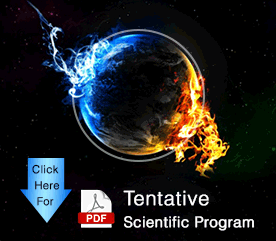
Carlos Eduardo Cerri
University of Sao Paulo, Brazil
Title: Soil carbon sequestration and greenhouse gas emission reduction from agricultural systems in Brazil
Biography
Biography: Carlos Eduardo Cerri
Abstract
The interactions of land use, management and environment create a varied picture of soil organic carbon (SOC) dynamics across the globe. Globally, the amount of carbon in soils, commonly represented by the mass of carbon, is estimated to be about 1500 Pg C (1 Pg C = 1015 g carbon) in the top 1 m of soil, which is 3 times the amount present in the vegetation and twice the amount found in the atmosphere. The amount of SOC has strong physical and biological controlling factors. These include climate; soil chemical, physical, and biological properties; and vegetation composition. Brazil is the third agribusiness leader worldwide, following European Union and the United States (WTO 2009). This presentation will include both an integrative view of global patterns on the distribution and trends in SOC as well as research in South America, specially in Brazil, focusing the impact of land use change and management practices on SOC. Land use change, mainly for previous agricultural practices, has often decreased in SOC stocks due to enhanced mineralization of soil organic matter (mainly to CO2). A significant fraction of the ~32% increase in atmospheric CO2 over the last 150 years stems from the breakdown of soil organic matter after forests and grasslands were cleared for farming. This process increases greenhouse gas (GHG) concentrations in the atmosphere, exacerbating global warming. Conversely, adoption of “best management practices”, such as conservation tillage, biochar application, can partly reverse the process – they are aimed at increasing the input of SOC and/or decreasing the rates at which SOM decomposes. This mechanism has been called “soil carbon sequestration” and can be defined as the net balance of all GHG (CO2, CH4 and N2O), computing all emission sources and sinks at the soil-plant-atmosphere interface. It must be noted that CO2 fluxes are evaluated trough C stock changes in the different compartments and CH4 and N2O fluxes directly measured, or estimated with the best available estimates. Finally, this presentation will also present the potential effects on soil carbon sequestration and greenhouse gas emission reduction due to agricultural systems in Brazil.

